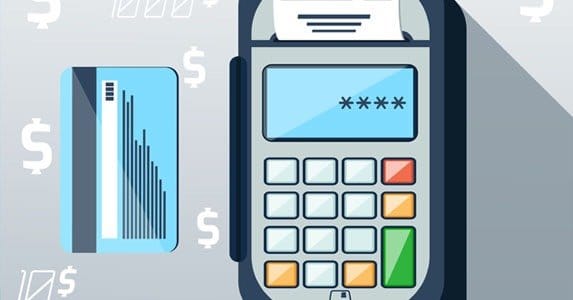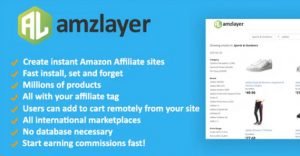The Ultimate Guide to Getting More Sales on an Amazon Store

Amazon has a very robust affiliate program, which you can use to create individual stores and sell anything that Amazon sells. You don’t have to deal with shipping, support, inventory or anything else; all you do is pick the products and sell them. It can be very lucrative, when done right. What do you need to do to do it right?
First of all, remember that this is through Amazon’s affiliate program. If you’re trying to sell products on Amazon, you can open a different sort of Amazon store, with all of the associated fees for Amazon fulfillment and other features.
Focus on a Niche
Picking the right niche is important, but more important than that is sticking to a niche. General interest sites and sites with an array of products ranging from electronics to kitchen utensils to survival gear to junk food don’t do well. The reason is user intent. If someone wants to buy a survival knife, they’re going to look for a site they can trust talking about survival knives, not a site that reviewed a knife once and is trying to sell them a mixer.
Link to One Product at a Time, But Frequently
Google and Amazon both don’t like it when you cram too many affiliate links to too many different products on the same page. Ideally, you’ll split up your posts about different products to different pages. Each page, however, should have multiple links to the product; typically one when it’s first mentioned and one at the end of the post, with maybe another added along the way.
The exception to this is on comparison articles. If you’re comparing two or three items, link to each of them in turn. It’s only when you’re trying to compare 10+ items that the multi-link effect hurts you.
Make Images Link to Product Pages
A lot of times, when a user clicks on an image on a website, nothing happens. Sometimes, that click will bring up a new tab or window with the image in full size, particularly if the image was a thumbnail. Sometimes it appears in a lightbox. None of these are helpful to an Amazon store.
Instead, every time you link to an image of a product, you should be linking that image to the corresponding Amazon page.
Offer Honest Reviews
Trust and honesty are better than rave reviews. Fun fact: people are more likely to trust a 4-star review as an indicator of a good product than they are a 5-star review, all other things being equal. This is because so many product sellers try to drown out low reviews with a flood of fake 5-star reviews.
When you’re reviewing a product for your affiliate store, put honesty above hype. Users will trust you that much more when you admit a product is flawed, point out what those flaws are and how to work around them, if necessary, and give the product an honest shake.
Drive More Traffic with Ads
At some point, the success of your store will come down to the volume of traffic you’re able to bring in. The two ways you’ll be bringing in traffic are organically and through ads. Ad traffic may seem counter-intuitive when your store isn’t making much money, but you have to spend money to make money in today’s commerce. Well, you don’t have to, but it certainly helps.
Build a Review-Centric Mailing List
When you become a viable and trustworthy source of reviews and product information, people will be more than happy to sign up for a weekly digest of new information related to your niche. Work to build this email list and you’ll have a ready source of interested affiliate traffic every week.
Abuse Holiday Shoppers
Holidays are great for one thing; themes. You can feature certain products, create package ideas, write gift lists and a whole host of other holiday themed store boosters. Plus, Amazon is one of the best online retailers in the world; they have the great deals users expect, and you don’t have to sacrifice your profits to take in the commissions.
Sell Cheap Items in Volume
Amazon’s affiliate percentages increase as you sell more. When you reach certain sales thresholds, your affiliate percentage increases. It’s a great idea to feature and sell small items, such as tertiary products and accessories, in volume. A bunch of little purchases increase your commission percentage, which then makes you more money on the big-ticket items.
Ignore the aStore
Amazon offers weird, hosted aStore solutions for people who don’t want to build websites, but they’re very lackluster. It’s always better to create your own website than it is to rely on Amazon’s boring side offering.
Focus on Links to Amazon
Every link to Amazon should be an affiliate link, and most of the links on your site should point to Amazon. The point at all times is to get people to click to Amazon, regardless of what product page they land on. Why? It puts a tracking cookie on the user’s computer, which serves as an affiliate code for every purchase they make, regardless of whether you linked to it. You could put up an affiliate link to a pen, and the user might click through and buy a lawn mower, and you would get a commission on that lawn mower.
Minimize Post-Purchase Information
This one is a common problem in today’s content-based web economy. In the constant search for content to publish, affiliate marketers end up publishing posts about how to use the big-ticket items. It happened to Darren Rowse, and it can happen to you. The problem is, people start to come to your site after they make their purchase, looking for information and advice. You’re giving that out for free.
Your two options are to minimize this post-purchase information so the people you attract are the people looking to buy, or to capitalize on the search for post-purchase information by making ebooks and other paid resources. The choice is yours.

 ContentPowered.com
ContentPowered.com






jenn
says:That was great information about small sales in volume increase your commission for larger items. I just started looking into the Amazon idea. Thanks for tips.